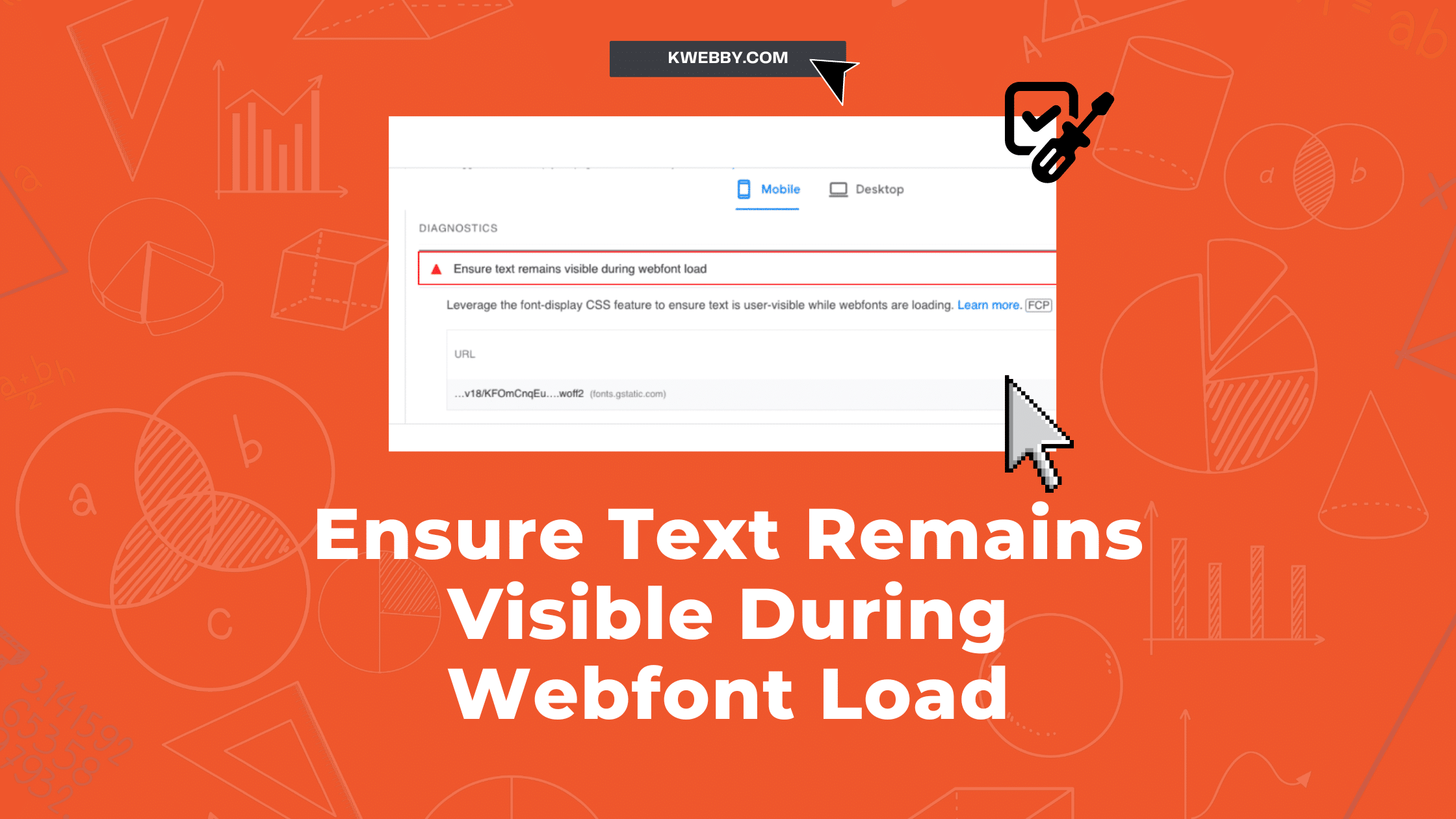Category: Core Web Vitals
How to Fix ‘Properly Size Images’ Warning (7 Methods)
With the rise of mobile browsing and speed-conscious users, it is becoming increasingly crucial to properly size images for optimal performance. Google warns about the significance of properly sizing images, not just a mere suggestion, but a critical step in improving site load time and conserving cellular data. The “Properly Size Images” warning gets triggered […]
Read MoreHow to Serve Images in Next-Gen Formats (4 Fixes)
In the realm of web performance optimization, serving images in Next-Gen formats is a prominent solution for accelerating page load times and enhancing user experience. Google PageSpeed Insights or Lighthouse often flags “Serve images in next-gen formats” as a common issue affecting page speed performance. This guide is designed to demystify the concept of Next-Gen […]
Read MoreHow to Ensure Text Remains Visible During Webfont Load
In web design, the importance of a visually pleasing and responsive user interface cannot be overstated. A critical aspect is ensuring the text remains visible during webfont load, a process that can significantly elevate a site’s user experience. This process, however, can be a challenging endeavour, requiring a careful balance between aesthetics and functionality. This […]
Read MoreHow to Avoid an excessive DOM size? (11 Proven Strategies)
The Document Object Model (DOM) size is a critical factor in web performance. A larger DOM size can lead to slower load times and decreased user engagement. Each HTML element added to the DOM increases its size, which in turn increases the time it takes for a browser to traverse, interpret, and render the page. […]
Read MoreInteraction to Next Paint (INP) – Measure & Optimize
Introduced in 2022 and set to replace First Input Delay (FID) as a Core Web Vital metric by 2024, Interaction to Next Paint (INP) has rapidly gained prominence in the realm of webpage responsiveness metrics. This innovative metric, which measures the latency of all user interactions on a webpage, holds the key to optimizing your […]
Read MoreHow to Improve Content Readability: 15 Expert Tips to Follow
In the era of digital content consumption, content readability has become a cornerstone of user engagement and retention. Why? Because readers crave content that is easily digestible, clear, and concise. When your content is readable, it is more likely to be shared, increasing your visibility and credibility in the digital realm. Let’s delve into some […]
Read MoreHow to Fix ‘Does not use passive listeners to Improve scrolling performance’
Performance is one of the most critical factors regarding SEO and user experience. Google has introduced Core Web Vitals to help webmasters optimize their websites for user experience and performance. One common issue webmasters and developers face the ‘Does not use passive listeners to improve scrolling performance.’ This guide will explain the cause of this […]
Read MoreHow to use CSS Image Sprites To Reduce HTTP Requests and Increase Pagespeed
If you’re a web developer or SEO, you know that site speed is essential for users and search engine ranking. One way to improve your site’s speed is by using CSS sprites. CSS sprites are a technique where you combine multiple images into one single image. This reduces the number of HTTP requests and can […]
Read MoreHow to Reduce Initial Server Response Time (5 Proven Methods)
If you’re running a website, you want to ensure that it loads quickly for your visitors. One of the critical factors in page load speed is initial server response time, which is when your web server starts sending data after receiving a request from a visitor. This post will share tips on reducing initial server […]
Read More









